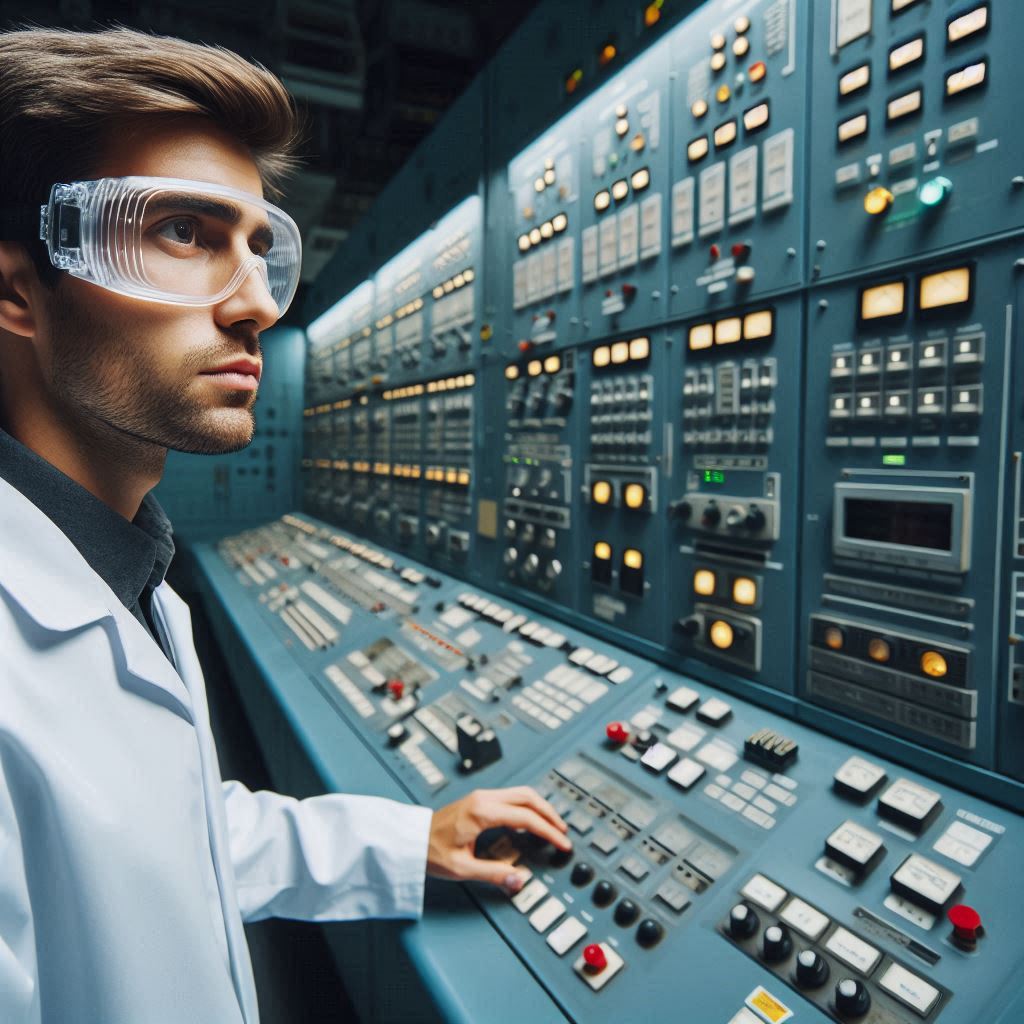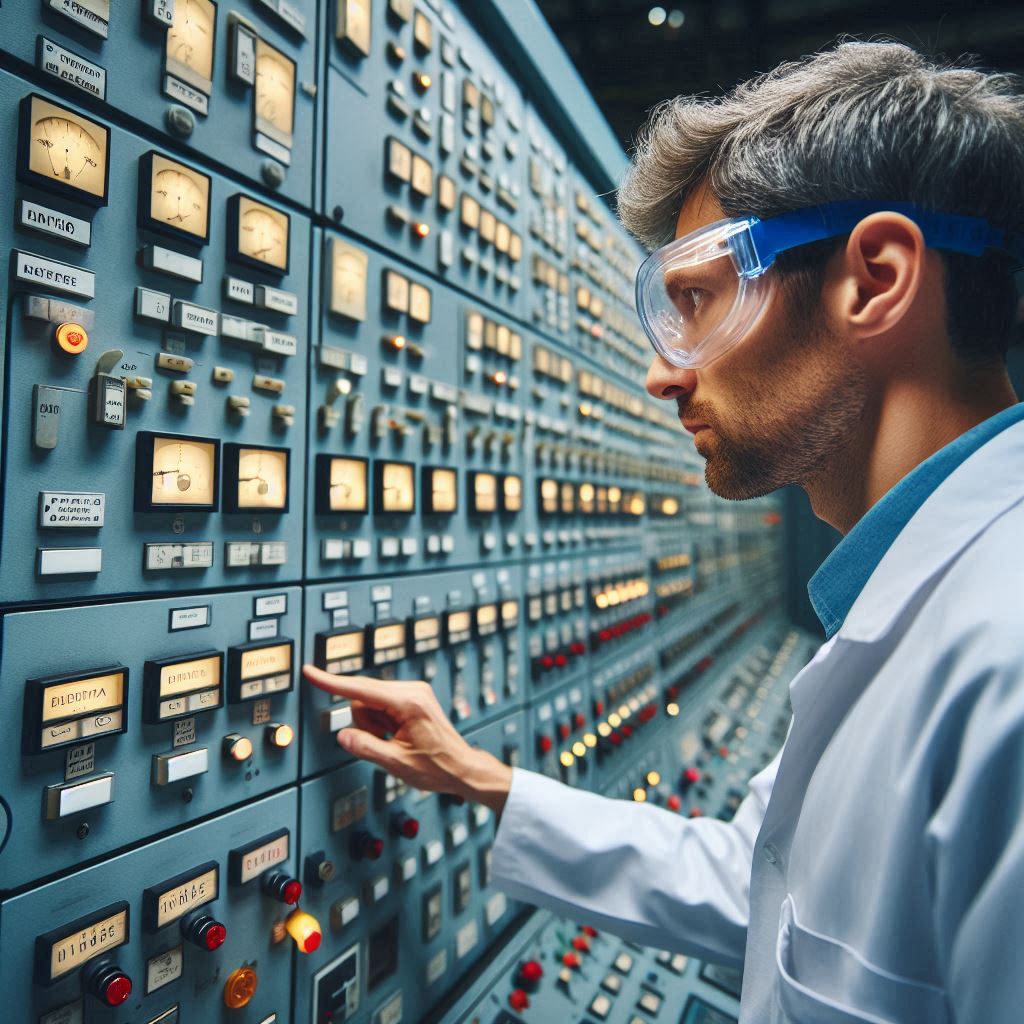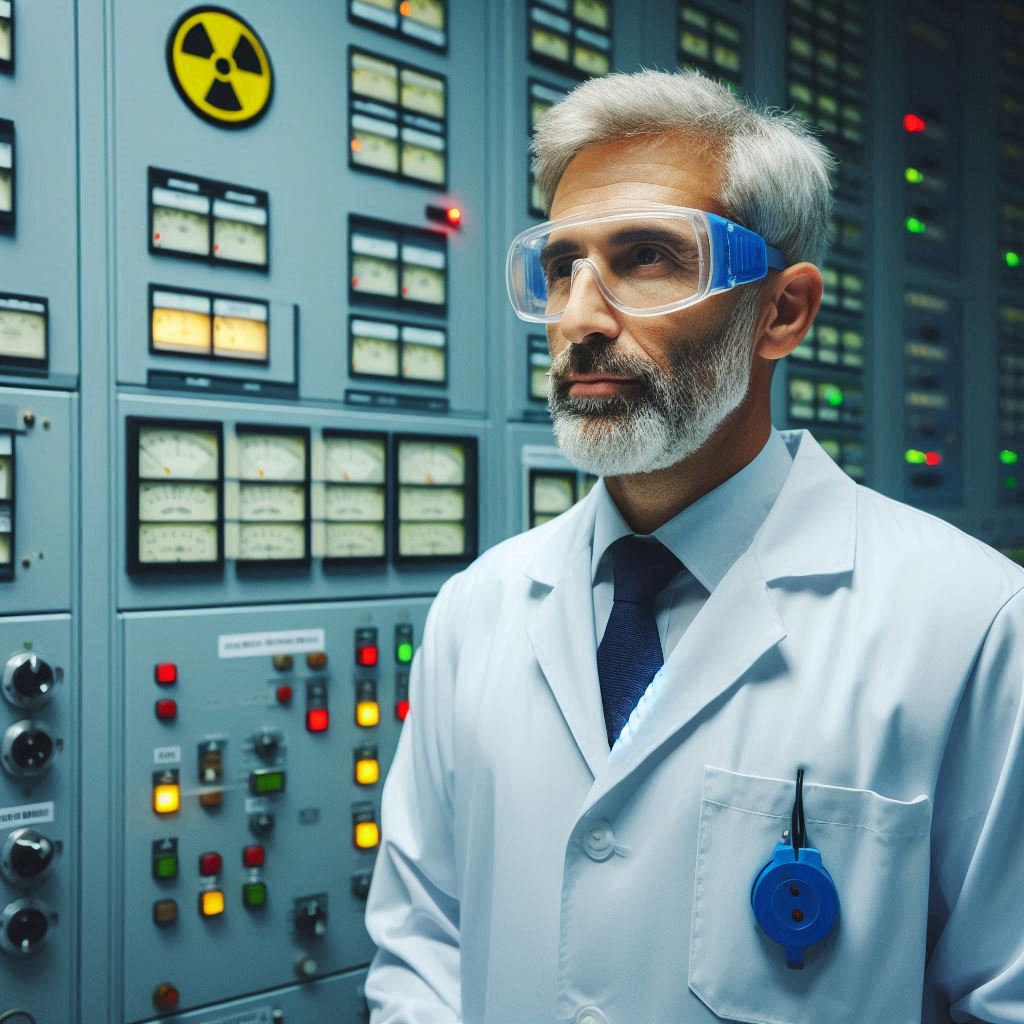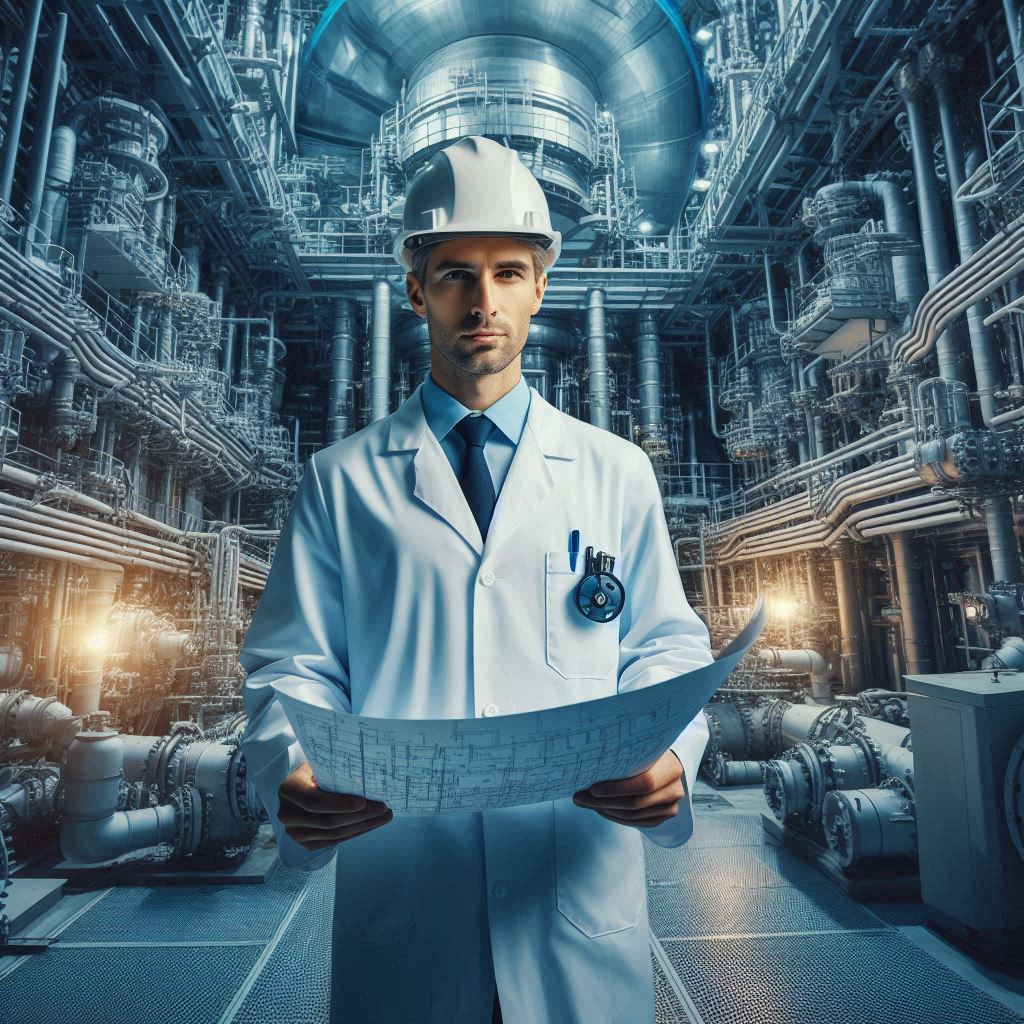Introduction
Overview of the current state of nuclear power
Nuclear power remains a significant component of the global energy mix.
It provides about 10% of the world’s electricity through reliable, low-carbon energy.
Despite its benefits, the industry faces challenges such as safety concerns, waste management, and public perception.
Importance of engineers in the development and maintenance of nuclear power plants
Engineers play a crucial role in the development, operation, and maintenance of nuclear power plants.
They design and build reactors, ensure compliance with safety standards, and address technical issues that arise.
Their expertise is essential for optimizing performance and advancing technology in the nuclear sector.
Preview of key points to be discussed in the post
This post will explore recent advancements in nuclear reactor technology, the ongoing challenges the industry faces, and the pivotal role of engineers in driving innovation and ensuring safety.
We will discuss how engineers contribute to the future of nuclear power and the potential for new technologies to reshape the energy landscape.
History of nuclear power
The Origins of Nuclear Power
Nuclear power began in the early 20th century, emerging from groundbreaking discoveries in nuclear physics.
In 1938, German physicists Otto Hahn and Fritz Strassmann discovered nuclear fission.
This pivotal discovery showed that splitting atomic nuclei could release enormous amounts of energy.
It set the stage for the development of nuclear power and weapons, fundamentally changing the energy landscape.
Key Milestones in the Development of Nuclear Reactors
The development of nuclear reactors marked significant milestones in the history of nuclear power.
The first major breakthrough occurred during World War II with the Manhattan Project.
The Chicago Pile-1, built in 1942, was the world’s first sustained nuclear chain reaction.
This success demonstrated the feasibility of harnessing nuclear energy on a large scale.
The 1950s saw the advent of commercial nuclear power.
The Calder Hall plant in the UK, which began operating in 1956, was the world’s first nuclear power station.
Shortly after, the United States launched the Shippingport Atomic Power Station in 1957.
These early reactors paved the way for widespread nuclear electricity generation, showcasing nuclear power’s potential.
In the 1970s and 1980s, reactor technology advanced, improving safety and efficiency.
Despite this progress, the industry faced significant challenges due to major accidents.
Major Nuclear Accidents That Have Shaped the Perception of Nuclear Power
Several major nuclear accidents have profoundly impacted the perception of nuclear power.
The 1979 Three Mile Island accident in Pennsylvania was a pivotal event.
A partial meltdown at this plant highlighted serious safety concerns and led to a reassessment of nuclear safety protocols.
The 1986 Chernobyl disaster in Ukraine further intensified global fears.
An explosion and subsequent fire at the Chernobyl plant released massive amounts of radioactive material.
This catastrophic event caused severe environmental and health issues, leading to widespread opposition and skepticism about nuclear power.
Despite these challenges, the 2000s brought renewed interest in nuclear power due to concerns about climate change.
Advances in reactor designs, such as Generation IV reactors, aimed to enhance safety and efficiency, addressing past issues and improving public perception.
In summary, the history of nuclear power reflects a complex journey of discovery, innovation, and adaptation.
From its origins in nuclear fission to the development of commercial reactors and the impact of major accidents, nuclear power continues to evolve.
The industry strives to balance its potential benefits with lessons learned from past challenges.
Read: The Role of Aerospace Engineers in Satellite Development
Current state of nuclear power
Statistics on the Global Use of Nuclear Power
As of 2024, nuclear power plays a significant role in the global energy landscape.
Over 30 countries operate nuclear reactors, generating approximately 10% of the world’s electricity.
There are more than 440 commercial nuclear reactors worldwide, with an additional 50 under construction or planned.
The leading countries in nuclear power production include the United States, France, China, and Russia.
The U.S. operates around 93 reactors, contributing roughly 20% of its electricity.
France relies heavily on nuclear power, with around 70% of its electricity coming from nuclear plants.
The Role of Nuclear Power in Reducing Carbon Emissions
Nuclear power is a key player in the fight against climate change.
It produces electricity with minimal carbon emissions compared to fossil fuels.
Unlike coal or natural gas plants, nuclear reactors do not emit greenhouse gases during operation.
As countries seek to meet their climate goals, nuclear power offers a reliable low-carbon energy source.
For example, in 2023, nuclear power helped avoid around 1.8 billion tons of CO2 emissions globally.
This makes nuclear power an essential component of strategies aimed at reducing overall carbon footprints and transitioning to cleaner energy systems.
Challenges Faced by the Nuclear Power Industry
The nuclear power industry faces several challenges despite its benefits.
One major issue is the high cost of building and maintaining reactors.
Construction projects often experience delays and budget overruns, making new nuclear plants expensive.
Additionally, public perception and safety concerns remain significant hurdles.
Major accidents like Chernobyl and Fukushima have heightened fears about nuclear safety, leading to regulatory and political challenges.
Another critical challenge is nuclear waste management.
The long-lived radioactive waste produced by reactors requires secure, long-term storage solutions.
Developing and implementing effective waste disposal methods remains a complex and contentious issue.
The industry also faces competition from other low-carbon technologies.
Advances in renewable energy sources, such as solar and wind, and improvements in energy storage, pose alternatives to nuclear power.
Balancing these technologies with nuclear power in future energy strategies will be crucial.
In summary, the current state of nuclear power reflects its substantial role in global energy production and its contribution to reducing carbon emissions.
However, the industry grapples with high costs, safety concerns, waste management issues, and competition from other technologies.
Addressing these challenges will be key to maintaining and expanding the role of nuclear power in a sustainable energy future.
Read: Aerospace Engineering in Commercial Spaceflight
Engineer’s Perspective on Nuclear Power
The Role of Engineers in the Design and Operation of Nuclear Power Plants
Engineers play a crucial role in both the design and operation of nuclear power plants.
During the design phase, they develop detailed plans for reactor systems, safety mechanisms, and support structures.
They use advanced simulations and modeling to ensure that reactors will operate efficiently and safely under various conditions.
Engineers also design the control systems that manage the reactor’s operation, including temperature regulation, pressure control, and emergency shutdown procedures.
In the operation phase, engineers are responsible for maintaining and monitoring the reactors.
They oversee daily operations, ensuring that all systems function correctly and safely.
This involves routine inspections, troubleshooting issues, and implementing necessary repairs or upgrades.
Engineers also handle regulatory compliance, ensuring that the plant meets all safety and environmental standards.
Their role is essential in optimizing plant performance while managing risks and maintaining safety.
The Skills and Expertise Required of Nuclear Engineers
Nuclear engineers require a diverse set of skills and expertise to perform their roles effectively.
A strong foundation in physics and mathematics is essential, as these disciplines underpin the principles of nuclear reactions and reactor design.
Engineers must understand nuclear physics, thermodynamics, fluid dynamics, and materials science to address complex challenges.
Technical skills are also critical.
Proficiency in using simulation software and conducting experiments is necessary for designing and testing reactor systems.
Engineers must be adept at problem-solving, as they frequently encounter issues that require innovative solutions.
In addition to technical knowledge, nuclear engineers need excellent communication skills.
They must be able to convey complex technical information clearly to non-engineers, including regulatory bodies and the public.
Collaboration skills are equally important, as engineers often work in teams with other specialists, such as chemists, physicists, and safety analysts.
The Importance of Safety Protocols in Nuclear Power
Safety protocols are paramount in nuclear power due to the potential risks involved.
Engineers implement a range of safety measures to prevent accidents and mitigate their impact.
These protocols include redundant safety systems, rigorous training for plant operators, and regular safety drills.
Engineers design and test safety barriers to protect against both internal and external threats.
For example, reactor containment structures prevent the release of radioactive materials.
Safety protocols also involve continuous monitoring of reactor conditions, with automated systems that can shut down the reactor in an emergency.
Compliance with regulatory standards is a key aspect of safety.
Engineers ensure that the plant adheres to national and international safety regulations, which are designed to protect both plant personnel and the surrounding community.
In summary, engineers are integral to the design, operation, and safety of nuclear power plants.
Their expertise ensures that reactors function efficiently while adhering to stringent safety protocols.
The skills and knowledge required of nuclear engineers are extensive, reflecting the complexity and critical nature of their work.
Ensuring safety and operational excellence remains a top priority in the nuclear power industry.
Advantages of Nuclear Power from an Engineering Standpoint
The Efficiency of Nuclear Power Plants in Generating Electricity
Nuclear power plants are highly efficient in generating electricity.
Unlike fossil fuel plants, which lose a significant amount of energy as heat, nuclear reactors convert a higher percentage of energy into electricity.
A typical nuclear power plant achieves an efficiency of around 33-37%, compared to approximately 30-35% for coal plants.
The efficiency of nuclear power is due to its ability to produce large amounts of energy from a small amount of fuel.
This is because nuclear fission releases several million times more energy per atom than chemical reactions in fossil fuels.
Additionally, nuclear plants operate continuously at high capacity, providing a stable and reliable power supply.
Analyze the Cost-Effectiveness of Nuclear Power Compared to Other Energy Sources
The cost-effectiveness of nuclear power is a nuanced topic.
While the initial capital cost of building a nuclear power plant is high, with estimates often reaching billions of dollars, the long-term operational costs can be relatively low.
Once operational, nuclear plants have low fuel costs, as uranium is inexpensive and the amount required is minimal compared to fossil fuels.
Additionally, nuclear plants have long operational lifespans, often exceeding 40 years, which can spread out the initial capital investment.
In comparison to fossil fuels, nuclear power can be cost-competitive over the long term.
While renewable energy sources like wind and solar have lower initial costs, they also require substantial investment in storage and backup systems to ensure reliability.
Nuclear power provides a consistent and high-output energy source without the intermittency issues associated with renewables.
However, the full economic comparison must account for decommissioning costs, waste management, and potential financial impacts from safety and regulatory requirements.
The Potential for Innovation in Nuclear Technology
The potential for innovation in nuclear technology is significant and promising.
Advances in reactor designs, such as Small Modular Reactors (SMRs), offer increased safety, flexibility, and efficiency.
SMRs are designed to be built in factories and transported to sites, reducing construction time and costs.
They can also be deployed in remote or small-scale applications, expanding nuclear power’s reach.
Another area of innovation is the development of Generation IV reactors.
These advanced reactors aim to improve sustainability by using fuel more efficiently and reducing nuclear waste.
For example, some Generation IV designs use fast neutron reactors to recycle spent fuel and minimize long-lived radioactive waste.
Nuclear fusion represents the most ambitious innovation.
Fusion promises to provide a virtually limitless and clean energy source by mimicking the processes that power the sun.
While still in experimental stages, projects like ITER are working towards making fusion a viable energy source in the future.
In summary, nuclear power offers several advantages from an engineering standpoint.
Its high efficiency in generating electricity, combined with its cost-effectiveness over time, makes it a competitive energy source.
The potential for innovation, including advancements in reactor designs and nuclear fusion, holds promise for further enhancing the role of nuclear power in a sustainable energy future.
Read: Essential Aerospace Engineering Textbooks
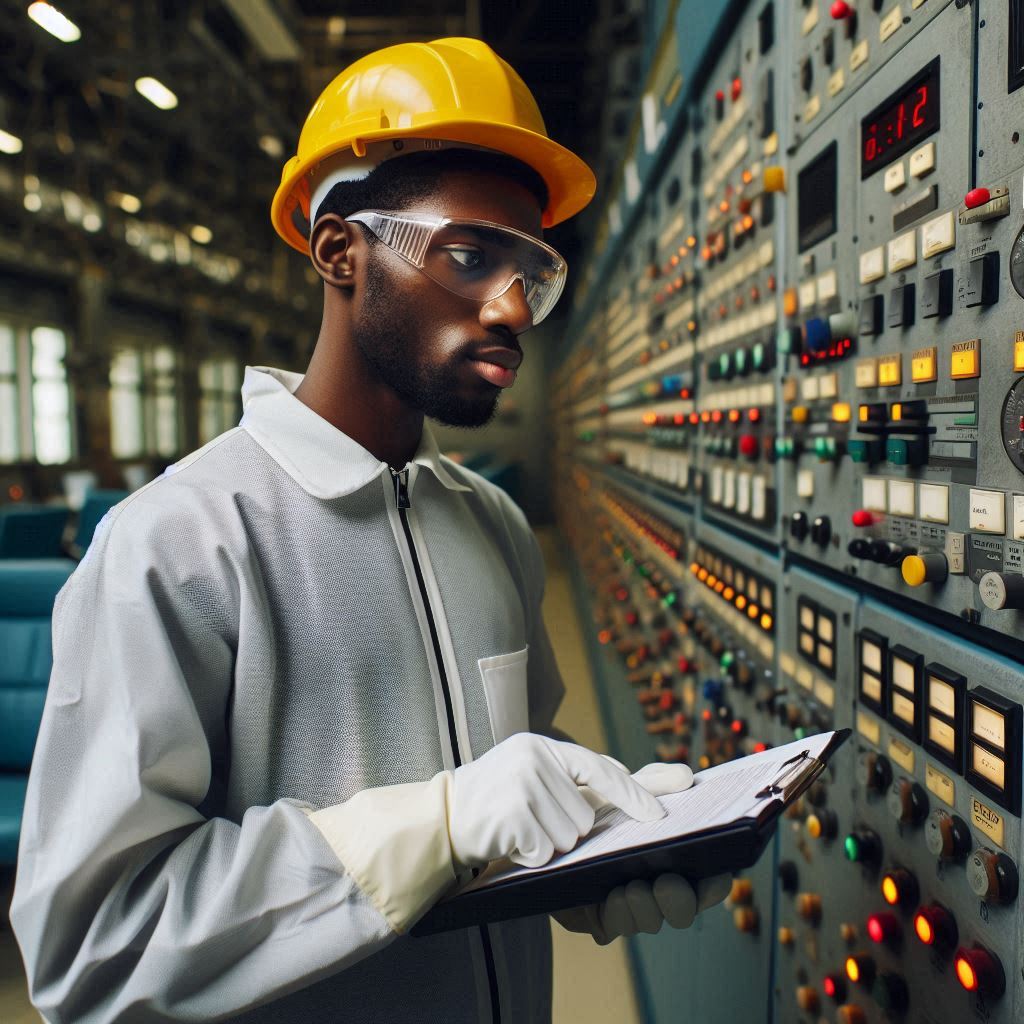
Challenges and Concerns for Nuclear Engineers
Addressing the Issue of Nuclear Waste Disposal
Nuclear waste disposal is one of the most pressing challenges for nuclear engineers.
The radioactive byproducts from nuclear reactors can remain hazardous for thousands of years.
Engineers face the challenge of developing safe and effective methods for managing this waste.
High-level waste, such as spent nuclear fuel, requires secure, long-term storage solutions.
Currently, deep geological disposal is considered the most viable option.
This involves burying waste in stable geological formations that are isolated from the biosphere.
Countries like Finland are advancing in this area with facilities like the Olkiluoto repository.
However, finding suitable sites and gaining public acceptance remain significant hurdles.
Engineers must ensure that disposal methods are secure, reliable, and capable of containing radiation for millennia.
The Risks Associated with Nuclear Accidents
The risks associated with nuclear accidents are a critical concern for nuclear engineers.
Although modern reactors are designed with multiple safety systems, the potential consequences of an accident can be severe.
Historical incidents like Chernobyl and Fukushima have shown the catastrophic impact that accidents can have on human health and the environment.
Engineers work to mitigate these risks through rigorous safety protocols, redundancy in critical systems, and continuous monitoring.
They design reactors with multiple layers of safety features, including emergency shutdown systems and containment structures.
Additionally, regular drills and simulations prepare plant operators for potential emergencies.
Despite these measures, the inherent risks of nuclear power mean that engineers must remain vigilant and proactive in maintaining and improving safety standards.
Transform Your Career Today
Unlock a personalized career strategy that drives real results. Get tailored advice and a roadmap designed just for you.
Start NowThe Public Perception of Nuclear Power and Its Impact on Engineering Efforts
Public perception of nuclear power significantly impacts engineering efforts in the field.
Historical accidents and concerns about safety have contributed to skepticism and opposition towards nuclear energy.
This perception influences regulatory policies, funding, and the pace of technological advancements.
Engineers must address these concerns by demonstrating the safety and benefits of nuclear power.
Transparent communication about safety measures, environmental impact, and technological advancements is crucial.
Engaging with the public and stakeholders through education and outreach can help build trust and support for nuclear projects.
Additionally, public perception can affect investment and policy decisions.
Engineers often face challenges in securing funding and regulatory approvals due to public apprehension.
Balancing the need for innovation with public concerns requires careful management and effective communication.
In summary, nuclear engineers confront several significant challenges.
Managing nuclear waste, mitigating the risks of accidents, and addressing public perception are key issues.
By developing secure waste disposal methods, improving safety protocols, and engaging with the public, engineers work to overcome these challenges and advance the role of nuclear power in the energy landscape.
Read: Exploring Subfields of Aerospace Engineering
Future Advancements in Nuclear Power
Emerging Technologies in Nuclear Power, Such as Advanced Reactors
Emerging technologies in nuclear power promise significant advancements in efficiency, safety, and sustainability.
One prominent example is the development of advanced reactors, including Small Modular Reactors (SMRs) and Generation IV reactors.
- Small Modular Reactors (SMRs): are designed to be scalable, flexible, and cost-effective. They can be built in factories and transported to installation sites, which reduces construction times and costs. SMRs are particularly suitable for remote locations or small grids where large reactors might not be practical. They also feature enhanced safety systems, such as passive cooling mechanisms that operate without external power.
- Generation IV reactors: represent a significant leap forward in nuclear technology. These reactors aim to improve sustainability by using fuel more efficiently and reducing radioactive waste. Designs include fast neutron reactors and molten salt reactors. Fast neutron reactors can recycle spent fuel and reduce the long-lived radioactive waste. Molten salt reactors operate at higher temperatures and lower pressures, increasing efficiency and safety.
The Potential for Nuclear Power to Play a Larger Role in the Transition to Clean Energy
Nuclear power has substantial potential to play a larger role in the transition to clean energy.
As a low-carbon energy source, nuclear power produces electricity without emitting greenhouse gases during operation.
This characteristic positions nuclear power as a key player in meeting climate goals and reducing reliance on fossil fuels.
Nuclear power can complement renewable energy sources, such as wind and solar, which are intermittent and variable.
By providing a stable, reliable base load of electricity, nuclear power helps balance the grid and supports the integration of renewables.
Advanced nuclear technologies, like SMRs, enhance this potential by offering flexible and modular solutions that can adapt to various energy needs and grid configurations.
Moreover, nuclear power can contribute to decarbonizing sectors beyond electricity generation.
For example, high-temperature reactors have the potential to produce hydrogen, which could serve as a clean fuel for transportation and industrial processes.
Research Initiatives That Could Shape the Future of Nuclear Power
Several research initiatives are shaping the future of nuclear power and addressing current challenges. Notable projects include:
- ITER (International Thermonuclear Experimental Reactor): ITER is a major international project focused on nuclear fusion. It aims to demonstrate the feasibility of fusion as a large-scale and carbon-free energy source. Successful fusion would revolutionize energy production, offering a virtually limitless and clean energy solution.
- Advanced Fuel Cycles: Research is ongoing into new fuel cycles and materials that can improve reactor efficiency and reduce waste. For example, studies on thorium reactors and closed fuel cycles explore alternative fuels that could enhance sustainability.
- High-Temperature Gas-cooled Reactors (HTGRs): HTGRs are being developed to operate at higher temperatures, which improves efficiency and allows for applications such as hydrogen production. These reactors use helium as a coolant, which offers safety advantages and increased thermal efficiency.
- Digital Twin Technology: Researchers are exploring digital twin technology to simulate reactor operations in real-time. This technology could enhance predictive maintenance, optimize performance, and improve safety by providing detailed insights into reactor behavior.
In summary, the future of nuclear power is shaped by emerging technologies, such as advanced reactors, and its potential role in the clean energy transition.
Ongoing research initiatives, including fusion projects and new fuel cycles, are driving innovation and addressing current challenges.
These advancements hold promise for a more sustainable and effective nuclear power sector in the future.
Conclusion
Recap of key points discussed in the post
This blog examined the future of nuclear power from an engineer’s perspective.
We highlighted advancements in reactor technology, safety improvements, and the role of engineers in driving these changes.
The discussion covered innovations like small modular reactors and next-generation designs that promise enhanced efficiency and safety.
The importance of nuclear power in the energy landscape
Nuclear power plays a crucial role in the energy landscape.
It offers a stable, low-carbon energy source essential for reducing greenhouse gas emissions and ensuring energy security.
As we transition to cleaner energy sources, nuclear power remains a key player in meeting global energy demands while mitigating climate change.
The potential for engineers to drive innovation and sustainability in the nuclear power industry
Engineers are at the forefront of revolutionizing nuclear power.
They can drive innovation by developing advanced reactor designs and improving waste management techniques.
Their work in enhancing safety and exploring fusion technology will significantly contribute to a more sustainable and efficient nuclear industry.
Collaboration among engineers, researchers, and policymakers will be crucial for advancing nuclear technology and securing a cleaner energy future.
[E-Books for Sale]
The Big Book of 500 High-Paying Jobs in America: Unlock Your Earning Potential
$19.99 • 500 High-Paying Jobs • 330 pages
Explore 500 high-paying jobs in America and learn how to boost your career, earn more, and achieve success!
See All 500 High-Paying Jobs of this E-Book
1001 Professions Without a Degree: High-Paying American Jobs You Can Start Now
$19.99 • 1001 Professions Without a Degree • 174 pages
Discover 1001 high-paying jobs without a degree! Unlock career tips, skills, and success strategies for just $19.99!

